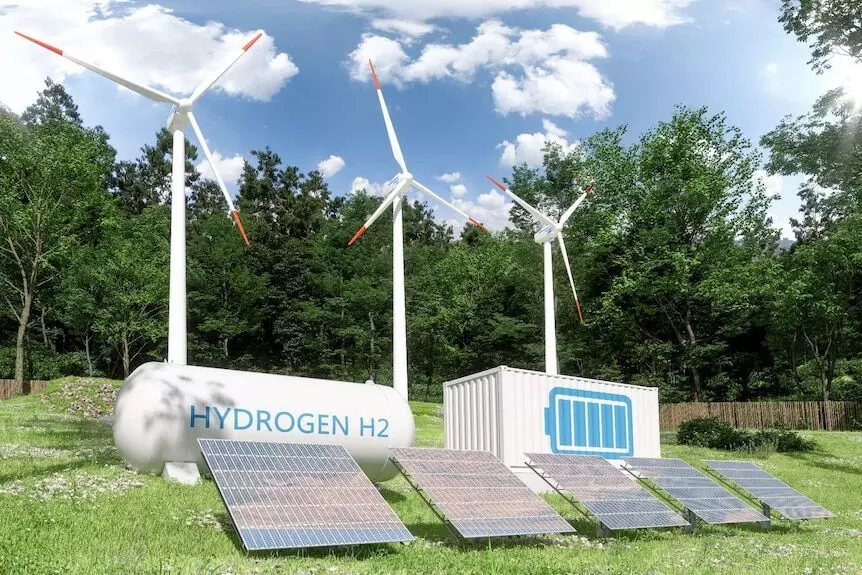Green Hydrogen Standard: India gets closer to reducing carbon emissions
With this announcement, India becomes one of the world’s first governments to declare a definition of Green Hydrogen
By Anoushka Caroline Williams
Hyderabad: The government has approved the Green Hydrogen Standard for India, a big step forward for the National Green Hydrogen Mission. The standard released by the Government of India’s Ministry of New and Renewable Energy (MNRE) lists the emission criteria that must be fulfilled in order for hydrogen generated to be designated as ‘green,’ i.e., from renewable sources. The definition’s scope includes both electrolysis-based and biomass-based hydrogen generation technologies.
The announcement of the Green Hydrogen Standard was eagerly anticipated by the Indian Green Hydrogen community. With this announcement, India becomes one of the world’s first governments to declare a definition of Green Hydrogen.
Following discussions with numerous stakeholders, the Ministry of New and Renewable Energy has decided to define Green Hydrogen as having a well-to-gate emission of no more than 2 kg CO2 equivalent/kg H2 (including water treatment, electrolysis, gas purification, drying, and compression of hydrogen).
The announcement stated that the ministry would develop a precise system for measuring, reporting, monitoring, on-site verification, and certification of green hydrogen and its derivatives.
The announcement further stated that the Ministry of Power’s Bureau of Energy Efficiency (BEE) would be the nodal authority for accreditation of agencies for monitoring, verification, and certification of Green Hydrogen production projects.
Green Hydrogen is gaining popularity as a possible source of renewable energy and is commonly referred to as ‘the fuel of the future.’ But what exactly is green hydrogen? What distinguishes it as ‘green’? And what are its applications and advantages? We describe this intriguing energy source, as well as its growth and prospects in India, in this article.
What is Green Hydrogen?
Green hydrogen is the name given to hydrogen gas produced using renewable energy sources such as wind or solar power, which emit no greenhouse gases. It may be utilised as a fuel in transportation, power generation, and industrial processes. When burned, it produces no greenhouse gas emissions like carbon dioxide.
How is hydrogen used as a fuel?
In a fuel cell, which turns chemical energy into electricity, hydrogen gas combines with oxygen to create electricity and water vapour. Because of its ability to create energy while emitting no greenhouse gases, hydrogen is a possible clean alternative to fossil fuels.
What are the most promising green hydrogen applications?
The majority of the hydrogen generated today is used in the refining and industrial sectors across the world. By the end of the decade, hydrogen will have a slew of new applications, including powering grids and fuelling the building and transportation industries.
Today, a lesser percentage of total hydrogen generated is used to manufacture ammonia for the fertiliser sector or as a shipping fuel. It is also used in the steel industry. If the coal and coke that currently fuel most blast furnaces could be replaced with green hydrogen, significant emissions from the industry may be avoided.
Hydrogen might be utilised in transportation, power production, and manufacturing in a growing country like India, which is investing in the National Hydrogen Mission to complete its energy transition goals. ‘Greening’ its production would also lower the number of fossil fuels used to manufacture grey hydrogens, such as natural gas or naphtha, that the country now utilises.
What are the benefits of green hydrogen tech over other renewables?
Renewable technologies like solar, wind, and hydropower are typically utilised to create electricity, which is only one component of a society’s energy usage. While electricity accounts for a major amount of total energy consumption and is readily replaced by renewable energy, other sectors such as long-distance transportation and heavy industries continue to utilise coal, natural gas, or petroleum. These are the primary energy sources that hydrogen might replace.
The National Hydrogen Mission was launched in August 2021 by India’s prime minister Narendra Modi. This established a goal of producing about 1 million tonnes of renewable hydrogen per year by 2030.
According to the proposal, the government would start a production-linked incentive system for electrolyser manufacture as well as financial help for research and development, according to the director (Research & Development), Indian Oil Corporation, SSV Ramakumar.
“The intermediate goal is to reduce greenhouse gas emissions by 1 billion tonnes of CO2 from current levels by 2030,” he said. “If this is to happen, hydrogen would be a critical facilitator in putting India on a green road,” he added.